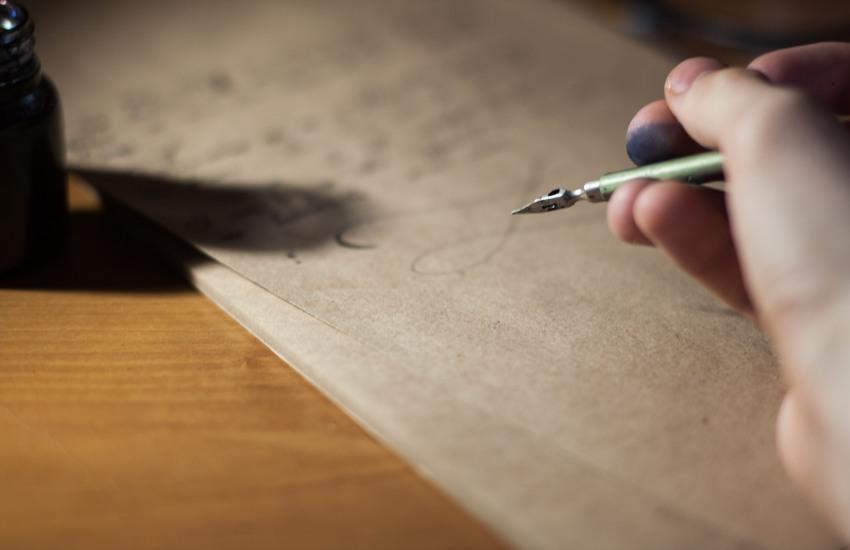Celebrating World Letter Writing Day
Published: Sep 01, 2022

While summer isn’t officially over as of yet, the end of August sort of marks the beginning of a new phase of the year, with students and teachers returning to school, and a veritable army of yellow buses hitting the road once again. It also marks the beginning of September, and there’s no better way to start the month than by recognizing World Letter Writing Day. Yes friends, every year on September 1st we celebrate the ancient practice of letter writing, complete with a writing tool such as a pen or pencil, and some good ol’ paper. Today we’re going to be talking a bit about the history of World Letter Writing Day, how letter writing can be beneficial, and ways in which we can celebrate. Let’s begin.
In 2014, Australian author Richard Simpkin created World Letter Writing Day as a way to share his love of letter writing with the world. In the early 2000s, Simpkin began handwriting letters to various Australian individuals he considered to be “Australian legends.” To his surprise, he received many responses to his letters, and decided to collect his original letters and their responses into a book called Australian Legends. Published in 2005, the book serves as Simpkin’s tribute to the art of letter writing, and how it changed his life. Currently, Simpkin conducts workshops in schools in which he teaches students the art of letter writing.
The history of written letters can be traced back to ancient India, Egypt, Rome, Greece, and China. Letters were often used as a means of communication, for providing important news or instructions, or even as a form of artistic performance. Moreover, people would write letters as a way to express themselves, self-educate, or simply to improve their written communication and reading skills, but we’ll talk more about that in a bit. Happily, we are able to study the written word from ancient times to learn more about our history. So, whether they knew it or not, ancient people created a detailed record of their time through their written communications with one another.
Ancient letters were written on materials such as metal or wooden tablets, papyrus, or animal skin. One could argue the notion that the more deliberate we’ve had to be in our writing, the better off our communication was. If you’re using a hammer and chisel, you’d have to be a bit more careful with your choice of words, and you’d have to be quite direct, or else you’d be writing a letter for a very long time. Nowadays, we use lots of abbreviations, and our communication is instantaneous, which can sometimes lead to things being said that were probably better off left in the back of the mind. Nevertheless, modern communication is a double-edged sword; no one will deny the ease with which we can communicate in the present day.
The gradual breakdown of communication with regards to the written word is a symptom of that ease. We should all take the time to think and write, and say what we mean. When we take a pen and put it to paper, we have to act slowly and methodically, and thus our expression becomes thoughtful and heartfelt, rather than rushed or reactionary. More recently, we’ve spoken about how writing things down can help us to better retain information and understand the importance of the words we choose. This practice serves as a sort of “letter to ourselves,” and harkens back to the early days of the written word. Writing to yourself is a great way to solve a problem, record your ideas for later use, or for practicing your written communication skills. It allows us to gather and organize our thoughts, especially if the mind is set on being unquiet.
A fun exercise is to write a letter to your future self. Maybe you’re just starting college this year, and you could write to yourself about what you hope to accomplish, the career you want, and where you want to be in say, ten years. Seal the letter in an envelope and set it aside, and set a reminder for yourself to open it at the time of your choosing. Even if your life has changed drastically in comparison to what you wrote down, you’ll see yourself in the words you chose way back when. It’s also a form of practical time travel, as you’ll get a window back into what you were thinking about in the past.
Ah yes, but what about celebrating World Letter Writing Day? For starters, you can write a letter to a friend or a family member. Imagine their surprise when they receive a hand-written letter in the mail! Make sure you include a nice “Happy World Letter Writing Day” in the letter-maybe you’ll get a hand-written response! Younger people and children may not even be aware that you can write a letter, head on over to the local post office and slap a stamp on the envelope, and mail it to another person. Another great way to celebrate World Letter Writing Day is by passing the practice on to others. If you’ve got a young person in your life, show them how to write and send a letter.
Lastly, try reading some famous letters from history. You’ll likely be impressed by the language used in older letters, and you’ll be able to add some new words to your growing vocabulary. It cannot be overstated that artful written communication is more relevant than ever, especially in a world with text message abbreviations and social media posts with character limits. So, take some time today to unplug and write things down the old fashioned way-it could be the beginning of a very good habit.
